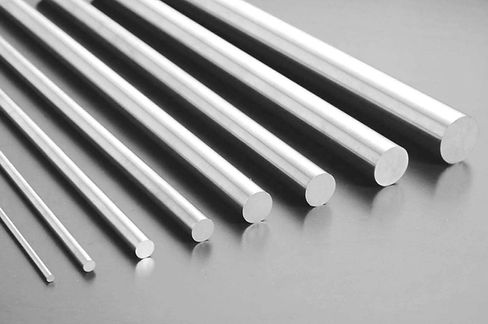Zirconium
The absorption cross-section for thermal neutrons is the smallest among metal materials, and corrosion resistance is very good, so it is in high demand as a material for nuclear reactors. However, it is necessary to not contain hafnium, so a chelate compound is made with an acetylacetone derivative, and hafnium is separated and then purified by metallurgy.
It is used for getters of vacuum tubes, flashlights for photography, etc. In the steel industry, it is used for deoxidation and desulfurization, and as an alloy, it is used as an acid-resistant material. Oxides are used as white pigments and fire-resistant materials.

History
Gems containing zirconium were known in ancient times as zircon. In 1789, German chemist Martin Klaprot analyzed zircon and isolated zirconium in the form of zirconia (zirconia).
Claffros failed to isolate the pure metal itself, and Humphrey Davy also failed in 1808 electrolysis. In 1824, the Swedish chemist Jons Berzelius obtained zirconium as a black powder by heating potassium hexafluorozirconate (K2ZrF6) with potassium metal.
Completely pure zirconium was produced only in 1925 by Dutch chemists Anton Edouard van Arkel and Jan Hendrick de Boer by the decomposition of tetravalent zirconium (ZrI4). Today, this metal is produced in large quantities by heating zirconium tetrachloride (ZrCl4) with magnesium.
Appearance
Hard, silvery metal, very resistant to corrosion .
Uses
Since zirconium does not absorb neutrons, it is an ideal material for use in nuclear power plants. More than 90% of zirconium is used in this way. A nuclear reactor can have more than 100,000 meters of zirconium alloy tubes. Together with niobium, zirconium has superconductivity at low temperatures and is used to make superconducting magnets.
Zirconium metal is protected by a thin oxide layer that is very resistant to corrosion by acids, alkalis and seawater. For this reason, it is widely used in the chemical industry.
Zirconium()IV) oxide is used in super-strong ceramics. Used to make crucibles that can withstand thermal shock, furnace linings, foundry bricks, abrasives, and the glass and ceramic industries. It is so strong that even scissors or a knife can be made from it. It is also used in cosmetics, antiperspirant, food packaging, and microwave filter manufacturing.
Zircon is a natural semi-precious gemstone of various colors. The most desirable ones are golden in color. This element was first discovered in this form and given its name. Cubic Zirconia () is a synthetic gemstone. A colorless stone resembles a diamond when cut.
Zircon mixed with vanadium or praseodymium creates the blue and yellow pigments that make ceramics glass.
Biological role
Zirconium has no known biological role and has low toxicity.
natural abundance
Zirconium is found in about 30 types of minerals, the main ones being zirconium and bad delite. More than 1.5 million tonnes of zircon are mined annually, mainly in Australia and South Africa. Most bad Delilite is mined in Brazil.
Zirconium metal is produced commercially by first converting zircon to zirconium chloride and then reducing the chloride with magnesium.
